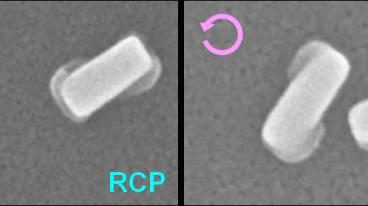Spectroscopy techniques are commonly used in materials research because they enable identification of materials from their unique spectral features. These features are correlated with specific material properties, such as their atomic configurations and chemical bond structures. Modern spectroscopy methods have enabled rapid generation of enormous numbers of material spectra, but it is necessary to interpret…
Artificial Intelligence Accurately Predicts Distribution of Radioactive Fallout
A Simple Route to Highly Chiral Materials
Chirality is at the heart of chemical research and much technology. For organic chemists, choosing between the left- and right-handed isomers of molecules is all part of a day’s work. However, many solid materials also have enantiomeric forms, giving rise to a range of applications. Organic chemists generally rely on an arsenal of laboratory reactions…
Robot Developed for Automated Assembly of Designer Nanomaterials
A current area of intense interest in nanotechnology is van der Waals heterostructures, which are assemblies of atomically thin two-dimensional (2D) crystalline materials that display attractive conduction properties for use in advanced electronic devices. A representative 2D semiconductor is graphene, which consists of a honeycomb lattice of carbon atoms that is just one atom thick.…
Solar Cell With Improved Transparency
Roof-mounted solar panels are an increasingly common sight in many places. As a source of cheap, clean electricity, their advantages are obvious. However, most solar panels are opaque, and therefore cannot be placed over windows. Now, researchers at The University of Tokyo’s Institute of Industrial Science (IIS) have made developments in the design of transparent…




